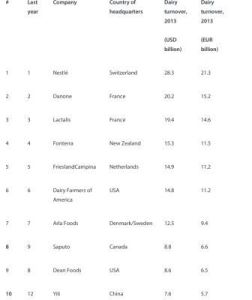Wetlands bring adverse effects farmers struggling – Paul Melville :
For the last two years, many farmers have appealed what they view as unworkable freshwater regulations.
The chief culprits have been rules requiring resource consents for planting a winter forage crop, rules that make paddocks of weeds so-called protected wetlands, and rules that require fencing of thousands of mountain streams.
Some 11,000 farmers across New Zealand were in breach of new fertiliser cap rules because a website wasn’t ready in time for them to comply.
But farmers are not alone. The wetland rules in particular apply to the entirety of New Zealand. What has become apparent, however, is that, under the regulated definition of a wetland, we actually have many more “wetlands” than first anticipated. With rules that make it impossible to do any earthworks within 100 metres of a wetland, and wetlands potentially on every corner, the Ministry of the Environment released proposed changes to these rules in May that would create a pathway for quarries, landfills, clean fills, urban development, mining and critical infrastructure. . .
Oops the world price dips for dairy products but low NZ dollar is a compensating factor – Point of Order :
Dairy prices have fallen at the Fonterra GDT auction this week. The average price at the fortnightly sale fell 3.5% to US$3911 ($NZ6830) a tonne, after rising 2% in the previous auction.
Prices have generally been falling since hitting a record high in March. But with the NZ dollar now down around the US57c mark, the impact of the latest fall on the farmgate payout will not be as great as it at first appears.
The price of wholemilk powder, which strongly influences the payout for farmers, fell 4% to US$3573 a tonne.
Prices for other products fell also: butter was down 7% to $4983,skim milk powder down 1.6% to $3497, and cheddar down 3.8% to $4,966. . .
This unrelenting wet is squeezing me dry – Steve Wyn-Harris:
There’s nothing glorious about mud, mate.
The big wet. There is no other term I could use for these past four months.
It’s been horrible.
Other regions have had heavy destructive flooding, which we’ve fortunately missed. It’s the constant persistence of rainfall and no drying that has been difficult here. . .
There’s strength in numbers for future farms – Neal Wallace:
Data-driven transformation of farms is the way forward, panel says.
Rob Macnab believes New Zealand sheep and beef (ngā kau me ngā hipi) farming systems are on the cusp of an exciting era but warns that farmers need confidence – and assistance to collect and understand data to drive that change.
A consultant with Total Ag in the Waikato, Macnab was part of an online panel discussing how to match consumer expectation with farm business realities.
He said collecting data on greenhouse gas emissions is a new skill set for many farmers (kaimahi pāmu). They need to be given the tools and scientific support to ensure collection is accurate and the information applicable. . .
Keeping the cattle mooving – Shawn McAvinue :
Shawn McAvinue talks to Palmerston Saleyards chairwoman Anita Vickers before the start of the first Palmerston Spring Cattle Sale last week.
Q How long have you been chairperson of the saleyards?
You can say chairman, none of this politically correct bull… I’ve been chairman since 2020.
Q What does the role call for?
Looking after the saleyards, general maintenance and making sure everything is happening.
Q What will you do today? . .
Dutch farmers face a major uncertainty – Sudesh Kissun:
European dairy co-operative FrieslandCampina has put on hold a cash payment to farmer members due to uncertainty over the Dutch Government’s nitrogen proposals.
Chief exectuive Hein Shumacher says the Dutch Government’s target for reducing nitrogen pollution in some areas by up to 70% by 2030 is “a major uncertainty”.
“For this reason, we are exercising extra caution in terms of our outlook for the rest of the year, and we have decided to forego the interim pro forma supplementary cash payment to our member dairy farmers.
” Dutch farmers have been taking to the streets in the Netherlands to protest, calling the targets unrealistic. . .



 Posted by homepaddock
Posted by homepaddock 

